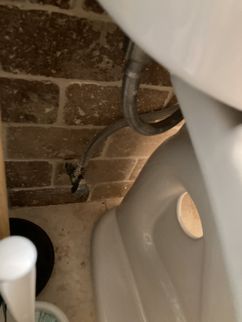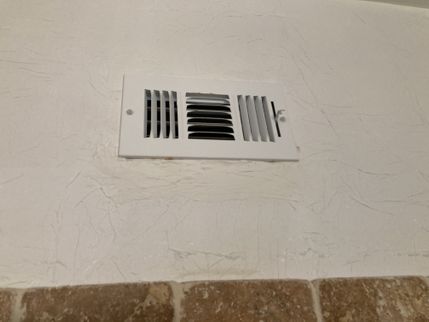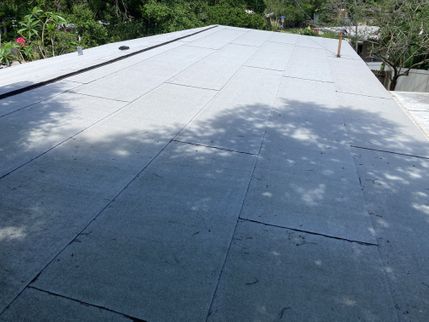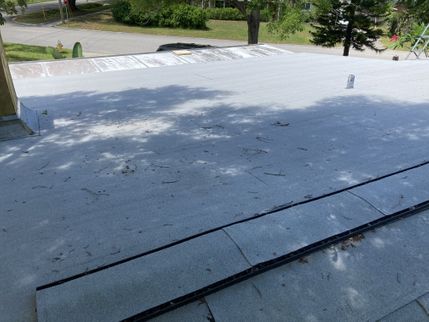The Scope and Purpose of a Home Inspection
Purchasing property involves risk
The purpose of a home inspection is to help reduce the risk associated with the purchase of a structure by providing a professional opinion about the overall condition of the structure. A home inspection is a limited visual inspection and it cannot eliminate this risk. Some homes present more risks than others. We cannot control this, but we try to help educate you about what we don’t know during the inspection process. This is more difficult to convey in a report and one of many reasons why we recommend that you attend the inspection.
A home inspection is not an insurance policy
This report does not substitute for or serve as a warranty or guarantee of any kind. Home warranties can be purchased separately from insuring firms that provide this service.
A home inspection is visual and not destructive
The descriptions and observations in this report are based on a visual inspection of the structure. We inspect the aspects of the structure that can be viewed without dismantling, damaging or disfiguring the structure and without moving furniture and interior furnishings. Areas that are concealed, hidden or inaccessible to view are not covered by this inspection. Some systems cannot be tested during this inspection as testing risks damaging the building. For example, overflow drains on bathtubs are generally not tested because if they were found to be leaking they could damage the finishes below. Our procedures involve non-invasive investigation and non-destructive testing which will limit the scope of the inspection.
This is not an inspection for code compliance
This inspection and report are not intended for city / local code compliance. During the construction process structures are inspected for code compliance by municipal inspectors. Framing is open at this time and conditions can be fully viewed. Framing is not open during inspections of finished homes, and this limits the inspection. All houses fall out of code compliance shortly after they are built, as the codes continually change. National codes are augmented at least every three years for all of the varying disciplines. Municipalities can choose to adopt and phase in sections of the codes on their own timetables. There are generally no requirements to bring older homes into compliance unless substantial renovation is being done.
This is just our opinion
Construction techniques and standards vary. There is no one way to build a house or install a system in a house. The observations in this report are the opinions of the home inspector. Other inspectors and contractors are likely to have some differing opinions. You are welcome to seek opinions from other professionals.
The scope of this inspection
This inspection will include the following systems: exterior, roof, structure, drainage, foundation, attic, interior, plumbing, electrical and heating. The evaluation will be based on limited observations that are primarily visual and non-invasive. This inspection and report are not intended to be technically exhaustive.
Your expectations
The overall goal of a home inspection is to help ensure that your expectations are appropriate with the house you are proposing to buy. To this end we assist with discovery by showing and documenting observations during the home inspection. This should not be mistaken for a technically exhaustive inspection designed to uncover every defect with a building. Such inspections are available but they are generally cost-prohibitive to most homebuyers.
Your participation is requested
Your presence is requested during this inspection. A written report will not substitute for all the possible information that can be conveyed verbally by a shared visual observation of the conditions of the property.
How to Read This Report
Getting the Information to You
This report is designed to deliver important and technical information in a way that is easy for anyone to access and understand. If you are in a hurry, you can take a quick look at our "Summary Page” and quickly get critical information for important decision making. However, we strongly recommend that you take the time to read the full Report, which includes digital photographs, captions, diagrams, descriptions, videos and hot links to additional information.
The best way to get the layers of information that are presented in this report is to read your report online (the HTML version), which will allow you to expand your learning about your house. You will notice some words or series of words highlighted in blue and underlined – clicking on these will provide you with a link to additional information. The HTML version of this report also contains streaming videos. Short video clips often contain important information and critical context and sounds that can be difficult to capture in words and still pictures.
For the most reliable viewing experience, I recommend viewing the report on as large a screen as practical, as much detail can be lost on small devices like smart phones. For similar reasons, reports should only be printed in color to retain as much detail as possible and minimize misinterpretation of photographs.
This report can also be printed on paper or to a PDF document.
Chapters and Sections
This report is divided into chapters that parcel the home into logical inspection components. Each chapter is broken into sections that relate to a specific system or component of the home. You can navigate between chapters with the click of a button on the left side margin.
Most sections will contain some descriptive information done in black font. Observation narrative, done in colored boxes, will be included if a system or component is found to be significantly deficient in some way or if we wish to provide helpful additional information about the system or the scope of our inspection. If a system or component of the home was deemed to be in satisfactory or serviceable condition, there may be no narrative observation comments in that section and it may simply say “tested,” or “inspected.”
Observation Labels
All narrative observations are colored, numbered and labeled to help you find, refer to, and understand the severity of the observation. Observation colors and labels used in this report are:
- Major Concern:Repair items that may cost significant money to correct now or in the near future, or items that require immediate attention to prevent additional damage or eliminate safety hazards.
- Repair:Repair and maintenance items noted during inspection. Please note that some repair items can be expensive to correct such as re-finishing hardwood floors, but are considered simply repair items due to their cosmetic nature.
- Recommended Maintenance:These are repair items that should be considered "routine home ownership items," such as servicing the furnace, cleaning the gutters or changing the air filters in the furnace.
- Improve:Observations that are not necessarily defects, but which could be improved for safety, efficiency, or reliability reasons.
- Monitor:Items that should be watched to see if correction may be needed in the future.
- Due Diligence:Observation such as a buried oil tank that may require further investigation to determine the severity and / or urgency of repair.
- Future Project:A repair that may be deferred for some time but should be on the radar for repair or replacement in the near future.
- Note:Refers to aside information and /or any comments elaborating on descriptions of systems in the home or limitations to the home inspection.
- Description:Detailed description of various aspects of the property noted during the inspection.
Pest Inspection
All items with the bug logo () are part of a structural pest inspection. If your inspector included a structural pest inspection as a part of the scope of your home inspection, you can distinguish pest inspection items by this logo. You can also go to the pest inspection summary page to see a summary of the items that are part of a pest inspection.
Summary Page
The Summary Page is designed as a bulleted overview of all the observations noted during inspection. This helpful overview is not a substitution for reading the entire inspection report. The entire report must be read to get a complete understanding of this inspection report as the Summary Page does not include photographs or photo captions.
Moisture Meter Testing
Where moisture meter testing is indicated in this report a Protimiter Survey Master Dual Function was used.
Summary
Major Concerns
- DPB-1 Decks, Porches and Balconies:
The concrete porches that are poured up against the house are showing signs of settlement. Have this further investigated and repaired as recommended y a qualified general contractor. You can often live with some settlement, but conditions can worsen over time. One option for repair is slab jacking where concrete can be lifted; though this tends to not work for old and brittle concrete which could crack during lifting.
Repairs
- G1-2 Grounds:
I recommend a cleaning and servicing of the site drainage system to ensure all ground water and roof runoff is being reliably controlled and diverted away from the building. Examples of observations noted during inspection include:
- G1-5 Grounds:
Concrete Patio has settled causing the tile to crack. Repair as needed.
- G1-6 Grounds:
Gate is hard to close. Latch needs repaired.
- G1-7 Grounds:
- ESDW-2 Exterior Siding, Doors and Windows:
- ESDW-3 Exterior Siding, Doors and Windows:
Evidence of old water damage was noted in the eaves. This is likely from an older roof or gutter failure. No evidence of an active leak was noted. During the next re-roof, have the eaves further evaluated and repaired as needed. Expect localized areas of minor rot.
- RCG-1 Roof, Chimney and Gutters:
- RCG-2 Roof, Chimney and Gutters:
- RCG-3 Roof, Chimney and Gutters:
Repairs are needed to the masonry chimney. The conditions noted here could increase the risk of moisture control problems related to the chimney. Neglecting maintenance on masonry chimneys can also lead to loose or damaged bricks and eventually a failing masonry system. Hire a licensed masonry contractor to further evaluate and repair the masonry chimney as recommended. Examples of observations noted during inspection include:
Chimney Caps
- The concrete chimney cap is cracked - this can lead to moisture control problems as well as physical damage.
Chimney Masonry
- Organic growth noted on the chimney - this can lead to moisture control problems and eventually can deteriorate the mortar and brick.
- ES-3 Electric Service:
Slightly discolored and damaged wire. Have an electrical contractor take a look to verify safety.
- EDFW-1 Electric Distribution and Finish Wiring:
The loose electric receptacles in the building should be secured to prevent accidental damage to the wiring connections. Securing loose receptacles can often be done by just tightening some set screws between the receptacle and the junction box, though sometimes it can get more complex if the box itself is loose. Repair as needed.
- EDFW-2 Electric Distribution and Finish Wiring:
Reverse polarity was noted at several of the electric receptacles. This is when the hot and the neutral wires have been wired backwards. This is a potential safety issue that should be corrected by a licensed electrical contractor the scope of other electrical repairs.
- P-5 Plumbing:
A drain pan has been installed below the water heater, but no drain was noted for the pan. A drain pan is recommended under water heaters that are located in finished spaces or where a leak could damage finishes. A pan without a drain is often of limited benefit / protection. For improved protection from accidental water heater leaks, and where a drain is difficult to install, consider a pan with a moisture alarm and a flood-safe device such as this: Watts Water Heater Leak Prevention.
- P-6 Plumbing:
Install listed seismic straps to restrain the water heater in the event of an earthquake; none were noted during inspection. Two straps should be located on the water heater: one on upper 1/3rd of tank and one at the lower 1/3rd.
- I-3 Interior:
The stair treads are narrow and would not meet modern safety standards - stair treads should be a minimum of 10-inches if there is a tread nosing and 11-inches if these are no tread nosings. This could be a safety / trip hazard and results in steep stairs. This may not be cost-effective to correct. Consult with a qualified general contractor about options to correct.
- K-5 Kitchen:
missing p-trap on garbage disposal side. Have a plumbing contractor make necessary repairs.
- K-9 Kitchen:
The water supply to the refrigerator appears to be disconnected. Repair or install a water supply to this appliance as needed.
- K-10 Kitchen:
The refrigerator ice maker was off during the inspection, so I could not verify that it was operational. Repair or make it operable as needed.
- LF-4 Laundry Facilities:
The dryer exhaust duct termination at the exterior of the building is covered with a screen. This is a potential safety hazard that could block lint and cause a fire. Replace this vent cover with a cover that has a backdraft damper.
- MB-3 Main Bathroom:
The master bathroom toilet has inadequate clearances - there should be 15 inches on either side of the toilet measured from the center of the toilet and 24 inches in the front. This could be difficult to correct at this point. Have this further evaluated and repaired as is feasible by a licensed plumber. This may need to be addressed during the next bathroom remodel.
- MB-4 Main Bathroom:
A bath fan that ducts to the exterior would be a logical improvement for the bathrooms in this home. This can help reduce indoor relative humidity in the home and help facilitate better indoor air quality and reduce conditions conducive to molds. I recommend fans made by Panasonic. These can be put on timers so that the fan will run after you get out of the shower to better control relative humidity.
- A-3 Attic:
The attic access hatch is too small and cannot be entered. Standards for attic access size is 30"/22" to provide access to this space to work and make repairs/improvements.
The attic was viewed from the hatch/opening.
- A-4 Attic:
falling insulation noted
Recommended Maintenance Items
- ESDW-1 Exterior Siding, Doors and Windows:
Localized caulking and painting repairs are needed to the exterior of the house. This is common recommended maintenance between complete exterior paint jobs to ensure that the more exposed areas continue to preform reliably. Implement painting and/or caulking repairs as recommended by a qualified contractor. Examples of specific observations noted during inspection include:
- RCG-4 Roof, Chimney and Gutters:
The gutters are clogged with organic debris and require cleaning to ensure proper control of roof runoff. Clean the gutters and ensure they are unobstructed, leak free and properly sloped to drain. This is routine house maintenance; I would expect the need to clean gutters and downspouts regularly.
- EDFW-3 Electric Distribution and Finish Wiring:
Since the 1970s, requirements for GFCI (Ground Fault Circuit Interruption) protection have changed, and locations requiring GFCI protection seem to get added with every code cycle. It is common for older residential buildings to have some or even many electric receptacles that do not meet modern safety standards. GFCIs have proven successful at reducing electrocutions, and it seems likely that someday, every circuit, receptacle, and appliance in the building will require GFCI protection. The first chart below shows how successful GFCIs have been at reducing risks from electrocution. The second illustration shows where GFCI protection is required as of the 2020 NEC and WAC. As a general best practice for safety. For improved safety, I always recommend bringing GFCI protection up to modern safety standards.
During inspection today, I noted that GFCI protection is inconsistent with modern minimum standards for safety in the following locations:
- P-4 Plumbing:
An expansion tank is recommended for the water heater. Expansion tanks help reduce pressure on the plumbing system by creating a buffer or a place for water to expand into as water swells during thermal expansion. Installation of expansion or pressure tanks is modern installation practice and will be required if a pressure reducing valve has been installed on a public water supply or if for any reason the plumbing system is closed. Open systems do not require an expansion device though they can still be an excellent way to help prevent build-up of pressures in the piping system. Consult with a qualified plumber to install.
- K-8 Kitchen:
The filters for the cooktop fan appeared to be dirty. Cleaning is recommended for improved reliability and safety as you do not want to allow for extensive grease build-up.
Improves
- I-4 Interior:
missing caulking
- K-3 Kitchen:
only set of cabinets that does not have the "soft close" feature
- K-7 Kitchen:
A ductless exhaust fan was noted for the cook-top. Installation of a fan that ducts to the exterior is recommended to remove moist air and odors to the exterior. Please note that if you switch to a gas range or cooktop in the future, a fan that vents to the exterior is still not required, as long as there is some ventilation in the kitchen, but is more strongly recommended. Gas ovens produce carbon monoxide while running and should really have an exhaust vent to the exterior.
✒
- In modern construction, all kitchens require some form of mechanical ventilation but modern buildings are generally much tighter and have more precise requirements for mechanical ventilation. It was common for older kitchens to have fans that do not vent to the exterior.
- There seems to be a fan vent here, but it does not appear to be connected as air is moving out the top of the microwave. It is possible the microwave can just be reconfigured to push air into the vent.
- LF-2 Laundry Facilities:
A moisture alarm with water shut-off features is recommended under the washing machine to protect against accidental leaks in the supply hoses. Pans can be effective when there is a drain, but even these will not protect against a burst supply connector. A moisture alarm with automatic shut-off will. Watts is a brand I have seen installed: Link.
- LF-5 Laundry Facilities:
No ventilation fan was found for the laundry room. This is common in older homes and required in newer buildings. Installing a ventilation fan is recommended to help control indoor relative humidity. This fan can be run during operation of the laundry and/or placed on a timer to come on automatically throughout the day using a timer. Hire a qualified contractor to further evaluate and repair.
Monitors
- G1-4 Grounds:
Ponding. Check with current homeowner to see if there has been any issue with water intrusion.
Due Diligences
- G1-3 Grounds:
Potential tripping hazard
- P-2 Plumbing:
No main water shut off was found inside the house. There is typically a shut off at the meter in the street, but this can be a time-consuming and difficult shut-off to access in an emergency. Inquire with the seller for the location of the main water shut-off as it may be concealed behind finishes or stored items. If no readily accessible shut off exists, hire a licensed plumber to further evaluate and install.
- P-3 Plumbing:
A video camera sewer scope is recommended. An evaluation of the sewer line below the ground is beyond the scope of this inspection. Due to the age and location of the building, a sewer scope is recommended to further evaluate the sewer line and the below ground connections between the house and the municipal sewer line. Sewer scopes are done using video cameras and can reveal the materials, condition and reliability of the sewer line. If that has been done recently, I recommend having a sewer scope performed.
- LF-3 Laundry Facilities:
Inquire with the seller to see if they have had the dryer exhaust duct recently cleaned? No lint build-up was noted, suggesting tat maybe a recent cleaning has been performed.
Future Projects
- I-2 Interior:
Notes
- GC-2 General Comments:
This hot link provides access to the National Association of Home Builders: Residential Construction Performance Guide.
- FSD-1 Fuel Storage and Distribution:
No fuel sources, fuel storage devices or fuel burning appliances were found on site during our visual inspection.
- ES-2 Electric Service:
This house has a surge protector installed to protect the electrical system. Disclose more information about which circuits are protected or of the whole panel is protected. Please note that the 2020 edition of the National Electrical Code requires type 1 or type 2 surge protection on new or renovated houses. This code change reflects the growing complexity of our electrical appliances and the risk of damage to these appliances from electrical surges.
- P-1 Plumbing:
This shows the location of the water meter at the south side of the house.
- FB-4 Family Bathroom:
During inspection today I operated all plumbing fixtures in bathrooms. I ran a moisture meter around toilets and tile shower enclosures to check for concealed leaks and sounded for loose tile and finishes in shower and tub enclosures. I do not test bathtub overflow drains as this risks damaging finishes around the tub. Monitor tubs while filling and avoid pushing water into the overflow. Even well-installed overflow drains can leak as the gaskets that seal the overflow will dry out over time and may no longer provide a watertight seal. Monitor plumbing after moving into a new home as testing during inspection presents less stress on plumbing than daily use. Please note that vacant homes present additional risk as it can be difficult to distinguish how the plumbing system will respond to daily use. Any defects uncovered during inspection are listed in this report.
- MB-5 Main Bathroom:
During inspection today I operated all plumbing fixtures in bathrooms. I ran a moisture meter around toilets and tile shower enclosures to check for concealed leaks and sounded for loose tile and finishes in shower and tub enclosures. I do not test bathtub overflow drains as this risks damaging finishes around the tub. Monitor tubs while filling and avoid pushing water into the overflow. Even well-installed overflow drains can leak as the gaskets that seal the overflow will dry out over time and may no longer provide a watertight seal. Monitor plumbing after moving into a new home as testing during inspection presents less stress on plumbing than daily use. Please note that vacant homes present additional risk as it can be difficult to distinguish how the plumbing system will respond to daily use. Any defects uncovered during inspection are listed in this report.
- A-2 Attic:
I did not crawl the crawl space for the attic where there was no ramp or safe way to access the space. Crawling in the V of trusses or on top of framing risks damaging thermal barriers and ceiling finishes and is not a safe way to access an attic. This limited inspection of this space.
📃 The Complete Inspection Report
General Comments
Building Characteristics, Conditions and Limitations
Style of Home: Ranch
Type of Building : Residential Single Family (1 story)
Approximate Square Footage: 1761
Approximate Year of Original Construction: 1959
Unless the wiring in the building has been fully updated, this building likely has wiring that predates the late 1980's. Branch circuit wiring installed in buildings built prior to the late 1980s is typically rated for a maximum temperature of only 60 degrees Celsius. This includes non-metallic sheathed (Romex) wiring, and both BX and AC metal-clad flexible wiring. Knob and tube wiring, typically installed in homes built prior to 1950, may be rated for even lower maximum temperatures. Newer electric fixtures including lighting and fans typically require wiring rated for 90 degrees Celsius. Connecting newer fixtures to older, 60-degree-rated wiring is a potential fire hazard. Repairs for such conditions may involve replacing the last few feet of wiring to newer fixtures with new 90-degree-rated wire, and installing a junction box to join the old and new wiring. It is beyond the scope of this inspection to determine if any such incompatible components are installed. Based on the age of this building, be aware that such components may be present.
In 1978, federal laws were passed to prohibit use of lead and asbestos in building materials. Manufacturers of building materials were allowed to sell existing stocks of materials that were manufactured with lead and asbestos, so even buildings constructed as late as the mid-1980's could possibly contain lead or asbestos. Identification and testing for lead and asbestos and other environmental testing is beyond the scope of this home inspection. If you wish to seek additional information, I recommend contacting an environmental lab or industrial hygienist.
Attending the Inspection: Vacant (inspector only)
Occupancy: Occupied
Animals Present: Dog present- no problem
Weather during the inspection: Clear
Approximate temperature during the inspection: 80
Ground/Soil surface conditions: Saturated
For the Purposes of This Report, the Front Door Faces: West, South
This hot link provides access to the National Association of Home Builders: Residential Construction Performance Guide.
This home was occupied at the time of the inspection. Inspection of occupied homes presents some challenges as occupant belongings can obstruct visual inspection of and access to parts of the building. We do our best during inspection to work around belongings to discover as much as possible about the house without moving or damaging personal property, however, the presence of personal items does limit the inspection.
Grounds
Drainage and Site
Clearance to Grade: Standard
Downspout Discharge: Above grade
Site Description: Moderate slope
Driveways/Walkways/Flatwork
Driveway: Concrete, Brick
Walkways: Concrete
Patios: Concrete, Tile
Grounds, Trees and Vegetation
Trees/Vegetation too near building: Yes - Prune Vegetation off House
Exterior Siding, Doors and Windows
Siding and Trim
Trim Material: Wood, Plastic
Siding Material: Concrete block, hard coat stucco
Localized caulking and painting repairs are needed to the exterior of the house. This is common recommended maintenance between complete exterior paint jobs to ensure that the more exposed areas continue to preform reliably. Implement painting and/or caulking repairs as recommended by a qualified contractor. Examples of specific observations noted during inspection include:
Eaves
Plywood
Evidence of old water damage was noted in the eaves. This is likely from an older roof or gutter failure. No evidence of an active leak was noted. During the next re-roof, have the eaves further evaluated and repaired as needed. Expect localized areas of minor rot.
Exterior Window Frames
Window Frames: Metal
Decks, Porches and Balconies
Wood Decks Porches and Balconies
None noted
Concrete Decks, Stoops, Landings and Porches
Concrete Structure: Concrete entry porch, Concrete back porch, Settlement Noted - Multiple
The concrete porches that are poured up against the house are showing signs of settlement. Have this further investigated and repaired as recommended y a qualified general contractor. You can often live with some settlement, but conditions can worsen over time. One option for repair is slab jacking where concrete can be lifted; though this tends to not work for old and brittle concrete which could crack during lifting.
Water-Resistant Decks and Balconies
Water Proof Surfaces: None Noted
Garage
Garage General
Garage Type: None Noted
Garage Doors and Automatic Openers
Overhead Garage Door Type: None
Garage Floor
Garage Slab: Concrete
Garage Stairs
Garage Stairs: None noted
Roof, Chimney and Gutters
Roof Materials
Method of Roof Inspection: Walked on roof
Roof Style: Gable
Flashings, Valleys and Penetrations: Present and Visually Standard, Caulking in need of repair
Roof flashings are used to keep a roofing system waterproof where the roofing material starts, stops, changes direction, or is penetrated. During the inspection, we look for standard flashing techniques that could be considered normal or standard in our region. Damaged, incomplete or non-standard flashings can be a sign of an older or less reliable roofing system and may require repair. Any non-standard flashings noted during the inspection will be reported below if found.
Roof Covering Materials: Torch-down / Modified bitumen
Approximate Age of Roof Covering: 2-5 Years
Shingle Fastening Accessible For Inspection : No
Chimneys
Present
Chimney Material: Masonry
Chimney Flue Liners: Present
Repairs are needed to the masonry chimney. The conditions noted here could increase the risk of moisture control problems related to the chimney. Neglecting maintenance on masonry chimneys can also lead to loose or damaged bricks and eventually a failing masonry system. Hire a licensed masonry contractor to further evaluate and repair the masonry chimney as recommended. Examples of observations noted during inspection include:
Chimney Caps
- The concrete chimney cap is cracked - this can lead to moisture control problems as well as physical damage.
Chimney Masonry
- Organic growth noted on the chimney - this can lead to moisture control problems and eventually can deteriorate the mortar and brick.
Gutters and Downspouts
Gutter and Downspout Materials: Aluminum
The gutters are clogged with organic debris and require cleaning to ensure proper control of roof runoff. Clean the gutters and ensure they are unobstructed, leak free and properly sloped to drain. This is routine house maintenance; I would expect the need to clean gutters and downspouts regularly.
Fuel Storage and Distribution
General Comments
No fuel sources, fuel storage devices or fuel burning appliances were found on site during our visual inspection.
Oil Storage
None noted
Propane Storage
None noted
Gas Meter
None noted
Gas, Propane and Oil Piping
Gas Piping Materials Noted: None Noted
Electric Service
Electric Service Voltage Tested
Service Voltage: 120/240
Electric Service
Service Entrance: Above Ground
Meter Base Amperage: 100
Electric Service Equipment
Main Panel Amperage: 100 amps
Main Electric Panel Location: Exterior
Panel Manufacturer: Square D
This house has a surge protector installed to protect the electrical system. Disclose more information about which circuits are protected or of the whole panel is protected. Please note that the 2020 edition of the National Electrical Code requires type 1 or type 2 surge protection on new or renovated houses. This code change reflects the growing complexity of our electrical appliances and the risk of damage to these appliances from electrical surges.
Sub Panel
Sub Panel: Present
Service Conductor Size: Copper, #4, 60 amps
Sub Panel Amperage: 60 amps
Sub Panel Location: Utility room
Sub Panel Manufacturer: Eaton
Appliance Disconnects
Disconnects Noted: Air Conditioner
Electrical Grounding System
Present - Could Not Confirm
During a home or property inspection, every effort is made to inspect the visible components of the electrical system grounding. The grounding system is critical for safely discharging electrical surges, especially in the case of lightning strikes. There is no way in the context of a home inspection to verify the "effectiveness" of the grounding system as much of the system is not visible, and there are no practical tests one can perform in the way we can test a furnace or a plumbing fixture. However, many things can lead me to recommend further evaluation of the grounding system by a licensed electrical contractor, and they will be documented in the observations below if discovered.
Electrical Bonding System
Present - Could Not Confirm, Inter-bonding Terminal Noted
Current regulations require an “Inter-system Bonding Terminal” to be installed as a place for the low voltage utilities to run their ground wires to. It will be attached to a #6 minimum copper ground wire run to the location from the service equipment. Such a terminal was found during inspection.
Electric Distribution and Finish Wiring
Branch Wiring
Wire Material: Copper
Wiring Method: Non-metallic sheathed cable, Rigid conduit
Receptacles and Fixtures
Inspection Method: Tested All Accessible
During inspection I make an effort to test and inspect all accessible electric receptacles and switches. In general, the scope of testing is directly related to access; where personal belonging and furniture obstruct access to receptacles and fixtures, fewer of them can be reasonably tested during inspection. All defects found during inspection today will be listed in this report. Inspection/testing of the electrical system can be challenging. It should be anticipated that not all defects will be discovered and that some issues found may actually not be defects at all. Tools used to verify proper wiring and function can vary wildly in reliability/consistency. The kinds of tools that could be used to confidently analyze the system and its function cannot typically be done in the context of a Standard Home Inspection. I look for indications of issues, based on the age of the home, types of wiring systems used etc, as well as personal experience and by testing with a variety of common tools. Issues identified, will be further discussed with recommendations in the electrical section below.
Electric Receptacles: Three wire receptacles, Reverse Polarity
The loose electric receptacles in the building should be secured to prevent accidental damage to the wiring connections. Securing loose receptacles can often be done by just tightening some set screws between the receptacle and the junction box, though sometimes it can get more complex if the box itself is loose. Repair as needed.
Since the 1970s, requirements for GFCI (Ground Fault Circuit Interruption) protection have changed, and locations requiring GFCI protection seem to get added with every code cycle. It is common for older residential buildings to have some or even many electric receptacles that do not meet modern safety standards. GFCIs have proven successful at reducing electrocutions, and it seems likely that someday, every circuit, receptacle, and appliance in the building will require GFCI protection. The first chart below shows how successful GFCIs have been at reducing risks from electrocution. The second illustration shows where GFCI protection is required as of the 2020 NEC and WAC. As a general best practice for safety. For improved safety, I always recommend bringing GFCI protection up to modern safety standards.
During inspection today, I noted that GFCI protection is inconsistent with modern minimum standards for safety in the following locations:
Ceiling Fans
Ceiling Fans: Present and Tested
Smoke and Carbon Monoxide Alarm Systems
CO Alarms Noted: In Bonus Room
In Bonus Room hallway
hallway
Smoke Alarms Noted: In Bonus Room
In Bonus Room hallway
hallway
Heating, Cooling, Fireplaces and Ventilation
Heating Systems
Vents and Flues
None noted
Air Filters
Filtration Systems: Disposable, size: 18x20x1
Cooling Systems and Heat Pumps
Heat Pump Present, Air Conditioning Present
The following list is a minimum set of requirements to be expected of heat pump or air conditioning servicing. I provide these as a courtesy to show they types of check-ups that should be expected from a professional servicing.
- Check compressor efficiency
- Check refrigerant level
- Clean the condenser coil
- Change or clean air filters
- Inspect contactors and wiring
- Inspect drive-sheaves, pulleys and belts
- Check and adjust for proper air flow
- Clean the blower motor as needed
- Lubricate all motors and shaft bearings
- Check, calibrate and program the thermostats and be sure the thermostat has adequate batteries as needed
- Check unit smoke detector, clean filter if applicable
- Check safety disconnect, laser-temp -- check across contacts
Manufacturer: Allied
Listed Nominal Capacity: 3 Tons
Energy Source: Electric
Age: 2022
Heating and Cooling Distribution Systems
Heat Source in Each Room: Present
Distribution Method: Forced Air / Ducts
Mechanical Ventilation Systems
Bath Fan Ducting: Ducted to exterior, None noted in master bathroom
Kitchen Fan Ducting: None noted
Gas Fireplaces
Fireplace Types: No gas fireplaces or woodstoves noted
Solid Fuel Fireplaces
Fireplace Types: Masonry firebox
Plumbing
Water Meter
Location of Water Meter Note
Water Service Supply
Pipe Material: Copper
Water Supply: Public water
Pressure Reducing Valve: None noted
Main Water Shut-off Location: Not Found - House
No main water shut off was found inside the house. There is typically a shut off at the meter in the street, but this can be a time-consuming and difficult shut-off to access in an emergency. Inquire with the seller for the location of the main water shut-off as it may be concealed behind finishes or stored items. If no readily accessible shut off exists, hire a licensed plumber to further evaluate and install.
Distribution Pipe
Supply Pipe Materials: Copper
Copper water supply pipes were installed. Copper pipes installed prior to the late 1980's may be joined with solder that contains lead, which is a known health hazard especially for children. Laws were passed in 1985 prohibiting the use of lead in solder, but prior to that solder normally contained approximately 50% lead. Note that testing for toxic materials such as lead, is beyond the scope of this inspection. Consider having a qualified lab test for lead, and if necessary take steps to reduce or remove lead from the water supply. Various solutions include:
- Flush water taps or faucets. Do not drink water that has been sitting in the plumbing lines for more than 6 hours
- Install appropriate filters at points of use
- Use only cold water for cooking and drinking, as hot water dissolves lead more quickly than cold water
- Treat well water to make it less corrosive
- Have a qualified plumber replace supply pipes and/or plumbing components as necessary
Functional Flow: Excellent
Circulation Pump: None Noted
Waste Pipe and Discharge
Discharge Type: Public Sewer - Buyer
Waste and Vent Pipe Materials: Not visible
Please note that the waste piping system is concealed behind finishes and not visible to inspection.
Location of Sewer Cleanout: Side Yard
This shows the location of the sewer cleanout found during inspection - north side of house. 📸
A video camera sewer scope is recommended. An evaluation of the sewer line below the ground is beyond the scope of this inspection. Due to the age and location of the building, a sewer scope is recommended to further evaluate the sewer line and the below ground connections between the house and the municipal sewer line. Sewer scopes are done using video cameras and can reveal the materials, condition and reliability of the sewer line. If that has been done recently, I recommend having a sewer scope performed.
Water Heater
System Type: Tank
Manufacturer: Bradford-White
Size: 40 gal
Age: 2015
Energy Source: Electricity
Straps : None Found
Pad: None Needed
Drain Pan: Present without drain
Expansion Tank: None Noted - Recommended
Relief Valve: Present - Not Tested, Discharges to the exterior
A temperature and pressure relief valve (TPRV) is required on all water heaters to discharge any excessive pressure within the tank. A discharge pipe should be attached to the valve and directed to a safe location away from body contact. Newer installations must be directed to the building exterior or to an approved indoor drain receptor. Most manufacturers suggest that homeowners test these valves at least once a year by lifting the lever to ensure the valve discharges properly and also recommend inspection of these safety devices every three years. The picture here shows a typical TPRV. They may also be found on the side of the heater on some models. I do not test these valves due to the possibility that they may leak after testing. A leaking or inoperative TPRV should be replaced immediately by a licensed plumber.
Due to inconsistencies between both UPC and IPC Plumbing codes, and water heater manufacturer's instructions, and TPRV manufacturer instructions, it is not actually possible to install the drain from the Water Heater TPRV "properly." There are conflicts with distance of termination to the floor/ground, types of pipes approved, and diameters of pipes approved. Additional confusion is added when jurisdictional inspectors approve installations/materials specifically not allowed by both codes and manufacturers. My recommendations will vary depending on the installation and will be included in the applicable narratives below.
Most codes defer to manufacturer instructions and I favor those recommendations. The yellow tag on the valve states clearly the termination should be 6" above the floor which is more consistent with the UPC code requirements.
A drain pan has been installed below the water heater, but no drain was noted for the pan. A drain pan is recommended under water heaters that are located in finished spaces or where a leak could damage finishes. A pan without a drain is often of limited benefit / protection. For improved protection from accidental water heater leaks, and where a drain is difficult to install, consider a pan with a moisture alarm and a flood-safe device such as this: Watts Water Heater Leak Prevention.
Install listed seismic straps to restrain the water heater in the event of an earthquake; none were noted during inspection. Two straps should be located on the water heater: one on upper 1/3rd of tank and one at the lower 1/3rd.
An expansion tank is recommended for the water heater. Expansion tanks help reduce pressure on the plumbing system by creating a buffer or a place for water to expand into as water swells during thermal expansion. Installation of expansion or pressure tanks is modern installation practice and will be required if a pressure reducing valve has been installed on a public water supply or if for any reason the plumbing system is closed. Open systems do not require an expansion device though they can still be an excellent way to help prevent build-up of pressures in the piping system. Consult with a qualified plumber to install.
Water Temperature
Water Temperature Measured During Inspection: 120 Degrees F
This thermal image shows approximate water temperature at the time of inspection.
Additional Plumbing
Sump Pumps and Drains
Floor Drain: None noted
Interior
Floors and Floor Materials
Floor Materials: Plastic laminate
Floor Settlement: None noted
Walls, Ceilings, Trim, Hallways and Closets
Wall and Ceiling Materials: Drywall, Wood
Wall Insulation and Air Bypass
Wall Insulation: Not Visible
Stairs and Railings
Treads (Narrow - Less than 10 inches), Risers, Inconsistent depth
The stair treads are narrow and would not meet modern safety standards - stair treads should be a minimum of 10-inches if there is a tread nosing and 11-inches if these are no tread nosings. This could be a safety / trip hazard and results in steep stairs. This may not be cost-effective to correct. Consult with a qualified general contractor about options to correct.
Interior Doors
Interior Doors: Hollow Core
Kitchen
Cabinets and Countertops
Countertop Material: Granite
Cabinet Material: Wood
Disposers
Disposer: Operated
Dishwasher
Dishwasher: Operated
Dishwasher Air Gap: Just a high loop
No air gap noted for the dishwasher waste line but they did run a high loop. This is generally satisfactory and is allowed for simply a "high loop" installation.
Ventilation Method
Ductless Fan - Electric
The filters for the cooktop fan appeared to be dirty. Cleaning is recommended for improved reliability and safety as you do not want to allow for extensive grease build-up.
A ductless exhaust fan was noted for the cook-top. Installation of a fan that ducts to the exterior is recommended to remove moist air and odors to the exterior. Please note that if you switch to a gas range or cooktop in the future, a fan that vents to the exterior is still not required, as long as there is some ventilation in the kitchen, but is more strongly recommended. Gas ovens produce carbon monoxide while running and should really have an exhaust vent to the exterior.
✒
- In modern construction, all kitchens require some form of mechanical ventilation but modern buildings are generally much tighter and have more precise requirements for mechanical ventilation. It was common for older kitchens to have fans that do not vent to the exterior.
- There seems to be a fan vent here, but it does not appear to be connected as air is moving out the top of the microwave. It is possible the microwave can just be reconfigured to push air into the vent.
Ranges, Ovens and Cooktops
Range/ Oven /Cook-tops: Electric
Refrigerators
Refrigerator: Operating, Water Supply (Disconnected), Ice Maker (Off)
The water supply to the refrigerator appears to be disconnected. Repair or install a water supply to this appliance as needed.
The refrigerator ice maker was off during the inspection, so I could not verify that it was operational. Repair or make it operable as needed.
General Kitchen Condition
Standard
Laundry Facilities
Washer
Tested
During inspection, I try and run the clothes washing machine. This is mostly so that I can push water down the drain to test the waste piping system. Running the clothes washer during an inspection is not a reliable test of the appliance. I am not actually doing a load of laundry, so please note the limitations of this test.
A moisture alarm with water shut-off features is recommended under the washing machine to protect against accidental leaks in the supply hoses. Pans can be effective when there is a drain, but even these will not protect against a burst supply connector. A moisture alarm with automatic shut-off will. Watts is a brand I have seen installed: Link.
Dryer
Tested
Proper dryer exhaust venting is critical for safe and reliable performance from the dryer. Here are some basic rules of thumb for dryer exhaust duct installation: Unless a vent-free appliance is being used, the dryer exhaust vent must terminate outdoors. It should be no more than 25 feet long and for every 90 degree turn subtract 5 feet and for every 45 degree bend subtract 2.5 feet. Use only smooth-wall metal vent pipe @ 4 inch pipe diameter. Do not use plastic pipe and plastic flex pipe. If a flexible connector is needed behind the dryer use a short amount of corrugated metal pipe. If the exhaust duct is getting pinched behind dryer, consider use of a dryer vent box, pictured here. Flex and corrugated pipes should never be used in concealed spaces such as through walls or in attic or crawl spaces. Insulate dryer exhaust duct where it passes through unconditioned spaces to prevent condensation that could hasten lint build-up inside the pipe. Do not use screws to connect pipe as these can trap lint. Secure duct with foil tape as needed. Be sure duct is sleeved properly so that it will not trap lint and clean the vent regularly, especially if it is a long exhaust run.
Power Source: Electric
Exhaust Duct: Ducted to Exterior, Cleaning - recently Cleaned? Inquire, Exhaust Termination (Screened - Not Recommended)
The dryer exhaust duct termination at the exterior of the building is covered with a screen. This is a potential safety hazard that could block lint and cause a fire. Replace this vent cover with a cover that has a backdraft damper.
Inquire with the seller to see if they have had the dryer exhaust duct recently cleaned? No lint build-up was noted, suggesting tat maybe a recent cleaning has been performed.
Laundry Sinks
None noted
Laundry Ventilation
Type: None noted
No ventilation fan was found for the laundry room. This is common in older homes and required in newer buildings. Installing a ventilation fan is recommended to help control indoor relative humidity. This fan can be run during operation of the laundry and/or placed on a timer to come on automatically throughout the day using a timer. Hire a qualified contractor to further evaluate and repair.
Family Bathroom
Sinks and Cabinets
Tested
Toilet
Tested
Bathtub / Shower
Tested
General Bath Condition
Standard
During inspection today I operated all plumbing fixtures in bathrooms. I ran a moisture meter around toilets and tile shower enclosures to check for concealed leaks and sounded for loose tile and finishes in shower and tub enclosures. I do not test bathtub overflow drains as this risks damaging finishes around the tub. Monitor tubs while filling and avoid pushing water into the overflow. Even well-installed overflow drains can leak as the gaskets that seal the overflow will dry out over time and may no longer provide a watertight seal. Monitor plumbing after moving into a new home as testing during inspection presents less stress on plumbing than daily use. Please note that vacant homes present additional risk as it can be difficult to distinguish how the plumbing system will respond to daily use. Any defects uncovered during inspection are listed in this report.
Main Bathroom
Sinks and Cabinets
Tested
Toilet
Tested
The master bathroom toilet has inadequate clearances - there should be 15 inches on either side of the toilet measured from the center of the toilet and 24 inches in the front. This could be difficult to correct at this point. Have this further evaluated and repaired as is feasible by a licensed plumber. This may need to be addressed during the next bathroom remodel.
Bathtub / Shower
Tested
Bathroom Ventilation
Type: Operable window
A bath fan that ducts to the exterior would be a logical improvement for the bathrooms in this home. This can help reduce indoor relative humidity in the home and help facilitate better indoor air quality and reduce conditions conducive to molds. I recommend fans made by Panasonic. These can be put on timers so that the fan will run after you get out of the shower to better control relative humidity.
General Bath Condition
Standard
During inspection today I operated all plumbing fixtures in bathrooms. I ran a moisture meter around toilets and tile shower enclosures to check for concealed leaks and sounded for loose tile and finishes in shower and tub enclosures. I do not test bathtub overflow drains as this risks damaging finishes around the tub. Monitor tubs while filling and avoid pushing water into the overflow. Even well-installed overflow drains can leak as the gaskets that seal the overflow will dry out over time and may no longer provide a watertight seal. Monitor plumbing after moving into a new home as testing during inspection presents less stress on plumbing than daily use. Please note that vacant homes present additional risk as it can be difficult to distinguish how the plumbing system will respond to daily use. Any defects uncovered during inspection are listed in this report.
Attic
Attic Access
Viewed at access
The attic access hatch is too small and cannot be entered. Standards for attic access size is 30"/22" to provide access to this space to work and make repairs/improvements.
The attic was viewed from the hatch/opening.
I did not crawl the crawl space for the attic where there was no ramp or safe way to access the space. Crawling in the V of trusses or on top of framing risks damaging thermal barriers and ceiling finishes and is not a safe way to access an attic. This limited inspection of this space.
There is no ramp or safe way to access the attic space. Crawling through insulation and on top of framing risks damaging thermal barriers and ceiling finishes and is not a safe way to access an attic. This limited inspection of this space.
Roof Framing and Sheathing
Rafters: 2x6
Sheathing: Tongue and groove
Attic and Roof Cavity Ventilation
Attic Ventilation Method: Ridge vents, Soffit vents
Attic and roof cavity ventilation is a frequently misunderstood element of residential construction. All roof cavities are required to have ventilation. The general default standard is 1 to 150 of the attic area and ideally, this comes from at least 60% lower roof cavity ventilation and 40% upper, but this is a wild over-simplifications of the subject. As a good guiding principle the most important elements for healthy attic spaces, which are traditionally insulated and ventilated are:
- Make sure the ceiling between the living space and the attic is airtight
- Ventilate consistently across the whole lower part of the roof cavity with low, intake soffit venting
- Upper roof cavity venting is less important and if over-installed can exacerbate air migration into the attic from the living space.
- Avoid power ventilators which can depressurize the attic and exacerbate air migration from the house into the attic.
For more information, please see: Link
Structure and Basement
Foundation
% of Foundation Not Visible: 100%
Evidence of Seismic Protection: None Found - Old House
Building Configuration: Slab on grade
Foundation Description: Poured concrete
Floor, Wall and Ceiling Framing
Wall Framing: 2x4, Not visible
Wall Sheathing: Visible
Floor Framing: Not applicable
Sub-Floor Material: Not visible
Ceiling Framing: 2x6, Partly visible
Checking Out Procedure
Check Out List
Oven: Off
Off
Lights: Off
Off
Heating and Cooling: Restored to Pre-inspection temperatures
Restored to Pre-inspection temperatures
Appliances: Off / finishing cycle
Off / finishing cycle
Wind Mitigation Form
Wind Mitigation Form
Invoice -- 📃 The Complete Inspection Report
1281 Sample St
| Inspection Fee | $350.00 |
| plus 4pt and wind mit | $100.00 |
| $450.00 | |
| DUE |




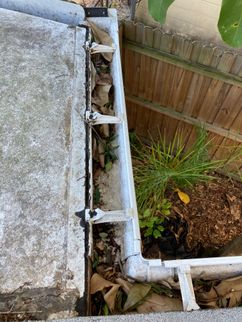

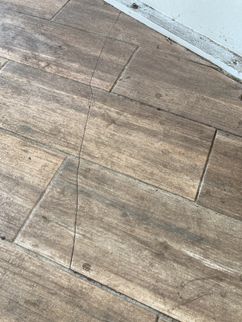



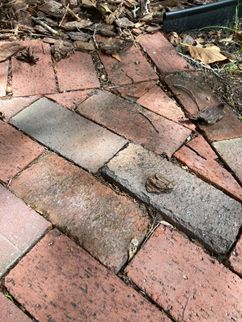
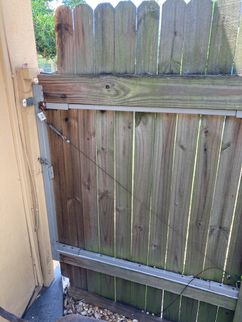

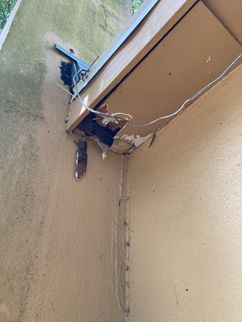
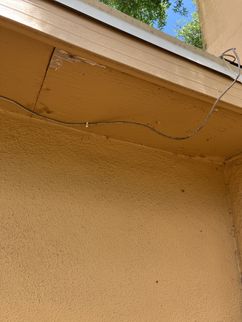











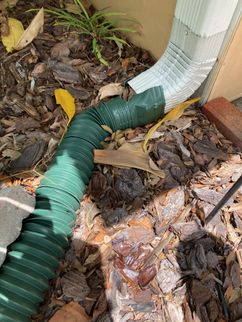











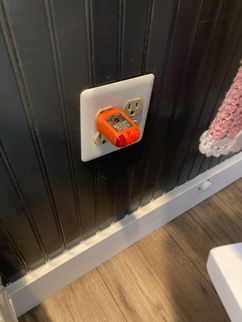

.png)





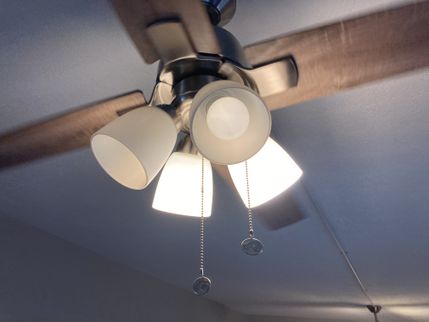




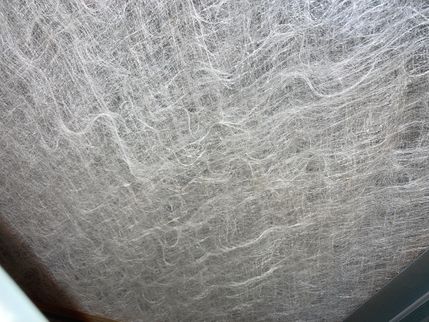

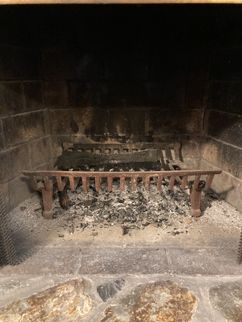
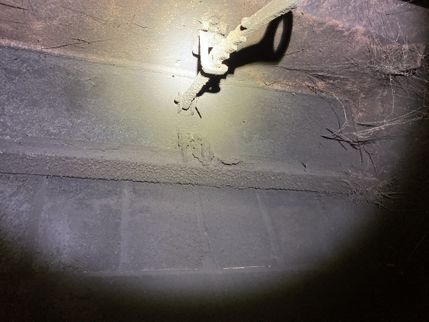


 (1) (1).jpg)






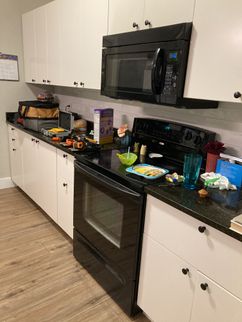


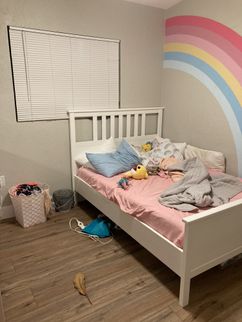




.jpg)







.jpg)
.jpg)
.png)
.png)






